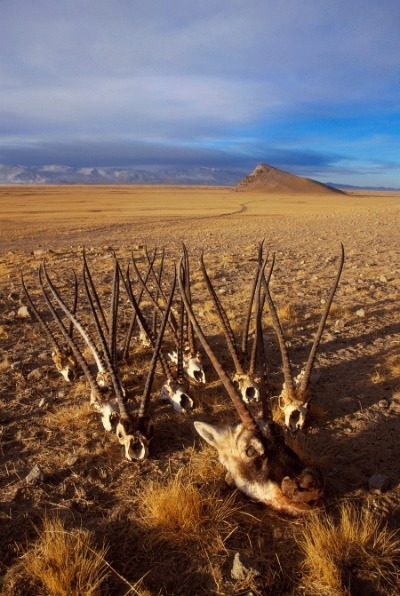 |
|
Skulls of Tibetan antelopes [Photo by Xi Zhinong/Wild China Film] |
In 1997 he entered Hoh Xil Nature Reserve in Qinghai province and photographed newborn lambs in the wild, wild wolves that were adept at swiftly evading the attentions of the camera, wild donkey herds that escaped from the paws of wolves, and direct evidence that Tibetan antelopes had been poached.
"We found 11 places with such corpses, and 89 ewes were killed by poachers, not including unborn lambs."
The scene was shocking, he said.
"In China, to be a wildlife photographer, a desperate love for nature is the minimum you need. You also need to be patient and have strong nerve. You have to be able to face horrific scenes, you have to endure anger, and you have to record and record again."
His records and materials have become a potent weapon in promoting protection of Tibetan antelopes, and thanks to his work, care for protecting the Tibetan antelope has traveled well past China's borders.
The Chinese Wildlife Photography Training Camp that Xi set up 15 years ago has become the Natural Image School, its aim being to cultivate more wildlife photographers to make the best nature movies in China. The Cangshan Mountain Nature Education Center, which he set up in 2016, is located at an altitude of 3,800 meters in Dali, Yunnan.
There is more to photography than just taking pictures, Xi said. "Photography is a tool, a powerful weapon for nature conservation. But you have to be a good photographer in order to make images strike a chord with the softest spot of one's heart."
Xi and his wife Shi, on average make 50 to 60 public speeches a year around the globe to promote their causes, and they are trying every new alternative venue such as the peacock stage play to help get their message across.